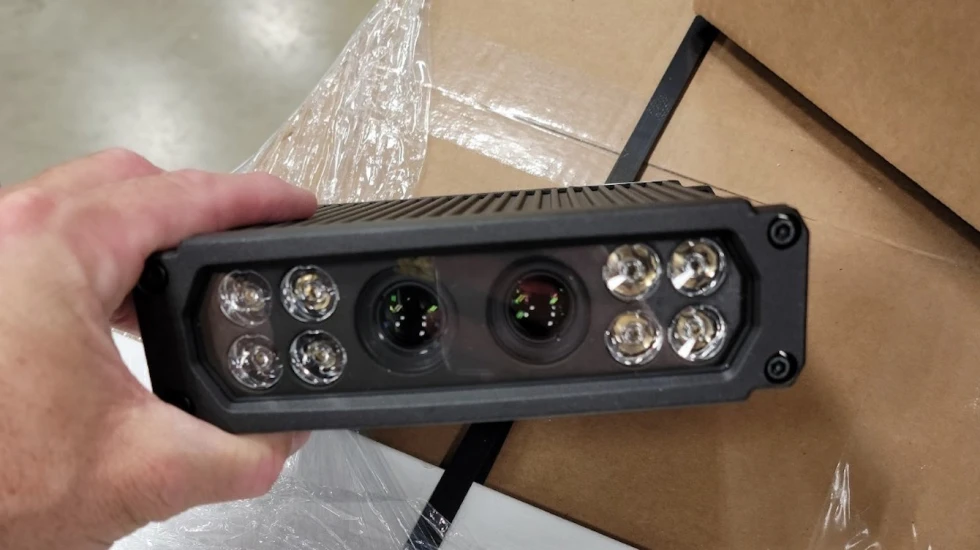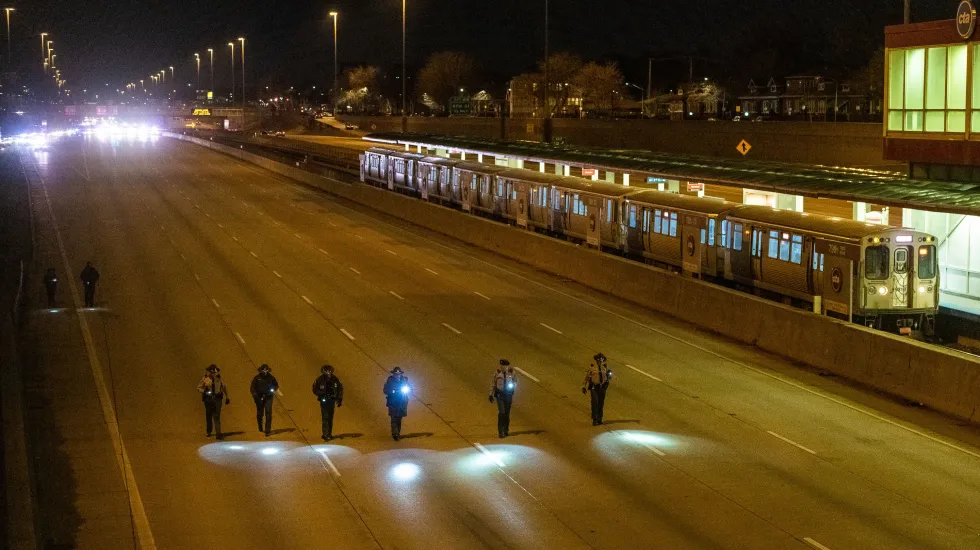When a recent University of Chicago graduate was killed by a mugger near campus last year, police tracked the suspected gunman across town with the help of a high-tech array of 400 cameras that read license plates.
A month later, the cameras led police to a suspect who was about to enter the Dan Ryan Expressway after fatally shooting a man in Chinatown. And in February, a camera helped catch a 16-year-old boy suspected of gunning down a 15-year-old boy minutes earlier in Bronzeville.
The cameras — known as automated license plate readers — are described by many in law enforcement as essential in their work, and they have been proliferating over the last decade. ALPRs use software to scan the license plates of every passing car, recording the date, time, GPS coordinates and even pictures.
The majority of large police departments in the country now use them. ALPRs in Chicago log 200 million license plates a year, giving police a detailed pattern about drivers’ daily habits and offering real-time alerts about cars wanted in crimes.
Mayor Lori Lightfoot has called them “a huge, huge tool” for police. In a speech late last year about the spike in violent crime in Chicago, she promised to “dramatically expand the reach of cameras with license plate readers.”
But despite their pervasive use — and some notable arrests — there are still questions about how useful this dragnet surveillance system is and whether it is worth collecting troves of data of mostly innocent people with a technology that is not regulated in Illinois.
ALPRs can misread license plates — one study showed a third of all “hits” were incorrect — and they can lead to innocent people being sought and arrested by police. A family in Colorado was detained at gunpoint by police after an ALPR mistook their car as stolen.

ALPRs were first pitched as a money-making tool, allowing officers to automatically scan thousands of license plates a minute from cameras in their squad cars and find drivers with outstanding tickets. But the cameras were quickly harnessed to track down vehicles suspected of being used in crimes.
“That talk is gone, and now we hear they’ll fight crime,” said Ed Yohnka, spokesperson for the American Civil Liberties Union in Illinois. “But one, it’s not clear that’s true. ... And the policies adopted around cameras don’t limit their use to violent crime, so you’re raising the prospect, at least, that you can use them to chase people for tickets or parking fines, sticker violations or whatever.
“The numbers of licenses scanned demonstrates the broad reach to surveil and see where someone is,” he said. “It’s a lot of power. The question, of course, is what do you use that power for?”
200 million plates in a year
Chicago police have used license plate reading cameras since at least 2006, expanding the program since then into one of the largest surveillance networks in the country.
CPD has 433 active ALPRs, some of them mounted on patrol cars and others at fixed places throughout the city, according to information obtained from a public records request. Chicago police have not disclosed the locations of their fixed ALPR cameras.
In the last three years, the city has installed at least $430,000 worth of ALPR cameras across the city. A single installation of cameras along DuSable Lake Shore Drive in 2020 totaled more than $300,000, according to city contacts obtained through a public records request.
Every month, the cameras capture, analyze and log the license plates of millions of vehicles in Chicago. In 2019, the cameras logged license plates over 200 million times, according to police data. There are just over 1,300,000 vehicles registered in Chicago.
Of those 200 million logs in 2019, more than half a million registered as a “hit,” matching plates listed as wanted in a crime in a national database, whether for murder or a petty offense. Police do not respond to every “hit,” and it’s unclear how many of the license plate captures were for the same vehicle.
The Chicago Police Department didn’t answer questions about privacy concerns. A spokesperson said license plate readers are an “important tool” that allow officers and detectives “to efficiently identify and track, in real time, stolen vehicles and vehicles suspected of being involved in crimes.”
“The information obtained from license plate readers is used to assist in police enforcement and investigations,” CPD said. “These license plate readers are part of CPD’s growing network of smart policing technology, which is instrumental in solving crime in every neighborhood across Chicago.”
In the case of the murder of the University of Chicago alum, Lightfoot said police acting on a tip used the cameras to find out where the suspect’s car was usually parked at night and set up surveillance. “Sure enough we saw someone who matched the description, approached the person, ended up putting him under arrest. And guess what? He had the gun that was used in killing the U. of C. alum,” the mayor said.
‘We use them for all of our cases’
Among the strong supporters of the cameras is recently retired Riverside Police Chief Tom Weitzel, who lobbied against a bill that would have regulated their use in Illinois.
“Definitely, fewer crimes would be solved” without ALPRs, he told the Chicago Sun-Times. “Law enforcement solves a lot of hit-and-runs from license plate readers. ... I know municipalities that have solved sexual assault cases through license plate readers. Those would either be very difficult to solve or never be solved ever.”

Expressway shootings can also be difficult to solve, and the Illinois State Police is expanding its use of the cameras.
After shootings on expressways more than doubled last year — with few arrests — the state police installed a hundred license plate cameras along the Dan Ryan Expressway. Another 79 cameras were installed on the Eisenhower Expressway on the West Side, according to State Police Major Matthew Gainer, who oversees the ALPR program.
The cameras have two purposes, according to Gainer: Troopers can respond in real-time to vehicles wanted in homicides, carjackings and other violent crimes, and the cameras provide data to help detectives follow up and solve crimes.
Gainer said that’s especially important given the nature of expressway attacks. “We don’t have Ring doorbell cameras. We don’t have people sitting on their front porch. We don’t have a neighborhood to canvass like traditional investigations require,” he said.
So detectives use the cameras to find victims, suspects and witnesses.

Early in the state police ALPR camera program, detectives used the cameras to identify a witness of a Dan Ryan shooting. The witness provided information that led to the shooter’s vehicle. The witness told police they wouldn’t have come forward unless police had reached out to them, Gainer said.
State police plan to deploy another 200 license plate cameras by midsummer, but their exact locations won’t be released, Gainer said. So far this year, there have been 40 shootings on Chicago-area expressways, 16 fewer than the same time last year.
“Every one of the shootings that we are investigating, [license plate readers] are part of it,” Gainer said. “We use them for all of our cases. That’s just how much of a norm it is.”
ALPRs basically work by comparing the license plates of passing cars and trucks against a national database of wanted vehicles.
With cameras mounted on squad cars, an officer’s laptop will light up with a red “flag” to indicate there’s something wrong with a plate’s registration. Fixed cameras send the same notification back to a collection center.
“Every vehicle you pass, if there’s something wrong with that vehicle’s registration, it will flag,” Weitzel explained. “So if the registered owner is wanted on a warrant, for example, there will be a red indicator that will come up on the screen that says, for example, the owner is wanted for domestic battery ... and you have the authority to stop and investigate.”
The driver of a flagged car or truck is not necessarily the registered owner, which means people can be stopped even though they are not wanted for a crime, Weitzel acknowledged.
‘More eyes on the road’
Weitzel, the retired chief, believes the cameras are so important that he penned a letter in 2015 urging the Illinois Legislature to reject a measure regulating them. He expressed concerns that ALPRs were being unfairly portrayed as “real-time tracking” in the bill, and said ALPRs are merely a quicker way of checking license plate registrations, which police have been doing manually for years.
“It is like having more eyes on the road,” Weitzel wrote.
The bill, drafted by the ACLU, would have limited police to saving license plate data for just 30 days unless it was used in an investigation. It would also have restricted municipalities from using data from private companies that don’t adhere to the 30-day purge rule and would have prohibited police departments from sharing the data outside the department.
The bill was defeated. Illinois lawmakers have since tried two other times to regulate ALPRs, but both attempts failed.
At least 16 states across the country have passed laws regulating how ALPRs are used, including California and Minnesota that restrict how police share the data with private companies.
Police departments say they have drawn up their own rules to prevent misuse. A CPD policy enacted in 2020 dictates that license plate data will be deleted after 365 days unless the plate is related to a crime. Illinois State Police policy wasn’t immediately made available.
Privacy advocates worry about how police departments share the data with other police departments and private companies that compile lists of wanted vehicle plates.
Vigilant is one of the largest private ALPR data companies in the country, compiling and sharing ALPR data among police departments. In 2019 and 2020, CPD reportedly paid Vigilant more than $723,000 for access to its software and databases. Illinois State Police also has a contract with Vigilant.
While CPD may delete its license plate data after a year, other police departments or companies that use the data may have different policies, possibly saving it beyond CPD’s self-imposed limit and exposing that data to hackers.
“If that agency keeps the data for longer, or doesn’t have privacy protections, then the CPD data is subject to all the possible abuses,” said Yohnka of the ACLU.
License plate cameras can also exacerbate police tensions in minority communities, where reliance on the cameras may translate to less community policing or to increased surveillance. “One of the things we’re seeing, where they’re installed, they’re effectively building an electronic mote around communities of color,” Yohnka said.
ALPRs have been widely adopted in Illinois without notable public debate, a discussion of privacy expectations or even regulated oversight to track their effectiveness or potential abuse, Yohnka said.
There ought to be a discussion about how to regulate cameras to keep police from using them to spy on people they know, Yohnka said, or to ensure that the data is kept from lawyers who may use them in divorce cases as I-Pass data is sometimes used.
“Even if the state won’t do the regulation, it doesn’t mean that a local government can’t create its own privacy policy that isn’t far-reaching,” Yohnka said. “That’s a long time, 365 days, for CPD.”







